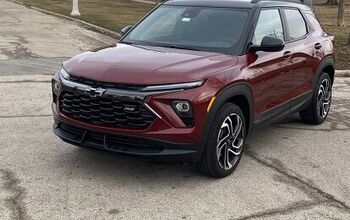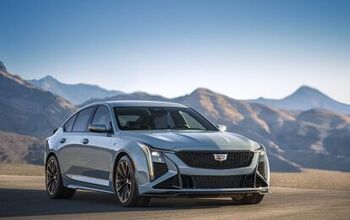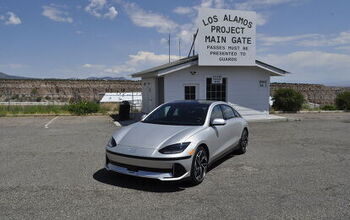Texas, Ohio: Voters Reject Photo Enforcement
Voters in three cities sent a clear message to local lawmakers yesterday by adopting charter amendments that ban photo enforcement. In addition to kicking two camera supporters from the city council, 72 percent of those voting in Chillicothe, Ohio approved a total prohibition on the use of red light cameras and speed cameras. In College Station, Texas the vote was much closer, but at the end of the night 52 percent wanted the red light cameras to come down. In Heath, Ohio 51 percent voted against the cameras. A total of nine cities nationwide have used the initiative process to ban camera enforcement since 1991, with camera proponents never having won a public vote.
The triple defeat for the photo enforcement industry came despite a well-funded public relations effort in each of the cities. In Chillicothe, Redflex Traffic Systems sent a glossy mailer to every voter while the mayor demanded that the Ohio Supreme Court ban the public from even voting on the issue — a move high court justices swiftly rejected. Citizens Against Photo Enforcement (CAPE), the group responsible for the ballot measure, claimed an additional victory as voters elected camera opponent Bruce Arnold, who won the seat of council president, Jeremy Siberell, who won the fifth ward and Dustin Proehl, the only incumbent to have voted against cameras. CAPE leader Rebecca Valentich told TheNewspaper that she was thrilled with the outcome.
“We came together as individuals, and we united as a community,” Valentich said. “The people have spoken, and very clearly. Our voices have been heard and thanks to the people and their strong voices, the cameras will be coming down. It is a huge victory, and one that we can all be proud of. And although our mayor has gone on record saying that he will fight the will of the people, his fight against the rights of the people will only bring a stronger united front from the community.”
In College Station, Texas the city’s automated ticketing vendor American Traffic Solutions (ATS) bankrolled a front group to conduct mass mailings and push polling in an effort to save the program that would have earned the company more than $11 million over the life of the contract. The ATS-funded group reported raising $71,240 in contributions, but not one dollar came from anyone living in the local community. To supplement the vendor’s effort, the city allocated taxpayer money to send red light camera promotional material to every voter. College Station activist Jim Ash, who led the fight to put the issue on the ballot, watched the results with a large group of supporters.
“It has been nothing but celebration here,” Ash told TheNewspaper minutes after the results became final.
In Heath, voters were bombarded with the same advertisements from Redflex, but they failed to persuade a majority. Voters also defeated Mayor Richard Waugh who had introduced photo enforcement as the signature issue of his administration.
“You can fight city hall and win, when you have a passion for what you believe in,” We Demand a Vote spokesman Lori Lyons said in a statement.
[courtesy thenewspaper.com]
More by The Newspaper
Latest Car Reviews
Read moreLatest Product Reviews
Read moreRecent Comments
- Bd2 Ultimately, it comes down to price/whether it makes financial sense for buyers (right now, BEVs just aren't there, even with the tax credit). HEVs are finally seeing their place in the sun, decades after being a niche market; this is due to premium for HEVs having narrowed significantly with pure ICE, whereby buyers can recoup that after 2-3 years of ownership.
- MaintenanceCosts I've experienced three cars that were the first year of the model. The two I bought (first-off-the-boat 2004 TSX and midyear 2006 Civic) were both Hondas and were both flawless. The other one was my ex-stepmother's 1990 Land Rover Discovery. It was one of the very first Euro-spec models, a two-door with an asthmatic carbureted 3.5L V8 and a five-speed manual. Every part of the car broke at some point, including things like hatch hinges that really shouldn't break. It turned her off Land Rover forever, and her cars since have all been Subarus.
- MaintenanceCosts When I was living with my Bolt in a rental condo and charging from 120V in the garage, as soon as the association figured out what was happening, they asked me to pay $30 a month to cover the cost. That's pretty close to what I was using so I had no issue with it.
- SCE to AUX I've had mixed results with first-year cars:71 Pinto - good. 85 LeBron GTS - good. 96 Grand Voyager - good. 02 Passat B5.5 - bad. 05 Odyssey - bad. I also had a last-year car that was terrible (80 Bobcat), but most cars were crap then, anyway.
- Crown Go big or go home. Never understood the "economy version" that manufacturers make of a performance car.


































Comments
Join the conversation
SRD275 is right MUST HAVE VIOLATIONS is key concept differentiating what could have been a decent but suboptimal modern electronic solution from what they really do. City and vendor adjust and adjust until its profitable, and decrease safety, in pursuit of revenue. Your increased fine dollars are going to support pension payments for retired city workers. Your next rear ender is an unintended but acceptable byproduct. Mass is deciding to head down this road in pursuit of revenue to state, not caring about losses in emergency rooms, morgues, body shops.
Pity the UK subjects don't get a direct say in how they are treated.